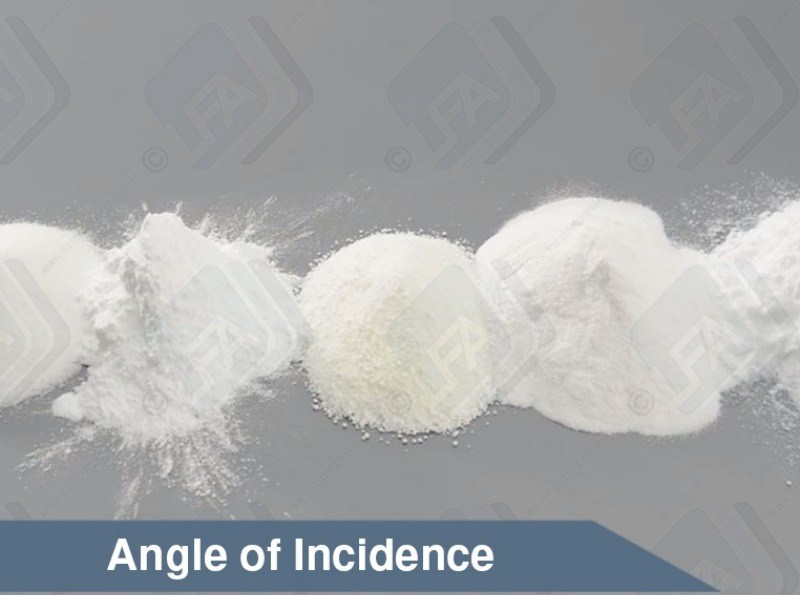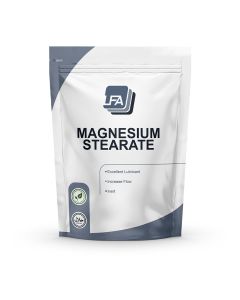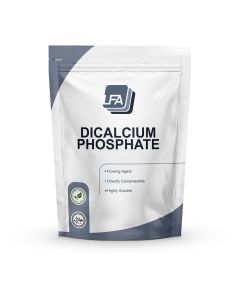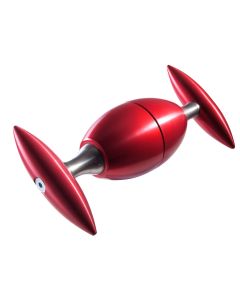Celulosa Microcristalina
¿Cuál es el excipiente ideal? Aquel que ayuda a una fácil ingestión por parte del consumidor, y facilita el proceso de elaboración. No solo un excipiente permitido, sino que además supere las funcionalidades estándar. Puede que la celulosa microcristalina sea el agente aglutinante que está buscando. No se gelifica, como la metilcelulosa, y comparado con otros agentes aglutinantes, ofrece un grado de fragilidad óptimo y a la vez es sensible a los lubricantes.
Principales ventajas de la celulosa microcristalina
- Alta compresibilidad
- Flujo mejorado
- Potente aglutinante
- Inodoro, insípido
- No reactivo
- Baja absorción
La celulosa microcristalina, conocida como MCC, se produce en un ambiente controlado. El resultado final es un polvo blanco y puro, sin sabor ni olor, con el que puede dar forma y dureza a sus tabletas. El MCC mantiene las ventajas necesarias de un diluyente. Es efectivo como agente de relleno en su tableta o cápsula, proporcionando el peso deseado. La celulosa microcristalina tiene una densidad mínima y mejora las características de flujo. Un flujo constante garantiza que cada ingrediente se mezcla de forma consistente en la fórmula. Si la mezcla es consistente, cada tableta tendrá la misma cantidad de cada ingrediente al final del proceso de producción, creando un producto de calidad.
Por qué elegir la celulosa microcristalina
La celulosa microcristalina hace su trabajo, y lo hace muy bien. Funciona perfectamente con muchos excipientes de uso común, y es parte integral de muchas fórmulas de fabricantes. Los aglutinantes son, sin duda, un elemento crucial en el proceso de tableteado, ya que aseguran la "dureza" de la pastilla. Además, la compresibilidad afecta a todos los aspectos del producto final, como la desintegración, disolución y absorción. La MCC es directamente compresible y, por tanto, puede ser comprimida en una tableta sin tener que granular o procesar la mezcla. El proceso de fabricación será, así, más eficiente.
La compresibilidad y aglutinación con características incuestionables de la celulosa microcristalina. Ninguna de estas características evitan, sin embargo, una fácil disolución en su forma de tableta, elemento de vital importancia en cualquier pastilla o cápsula. La MCC es segura para su consumo en cantidades normales, y se utiliza ampliamente como excipiente para tabletas. Además, es una fuente de fibra natural y no tiene calorías. La MCC es inerte, y no reaccionará o interferirá con otras substancias.
La visión de LFA
En general, este producto podría ser lo que está buscando. Es un codiciado excipiente, ya que está entre los diluyentes más populares y tiene una excelente capacidad de aglutinación. Por tanto, su proceso de tableteado será mucho más fácil con la utilización de este ingrediente. Con todos sus usos y ventajas, la celulosa microcristalina es una elección ideal como agente aglutinante. El uso de la MCC junto con otros excipientes ayudará a una producción eficaz y libre de problemas.
| Nombre | Valor |
|---|---|
| Número CAS | 9004-34-6 |
| Fórmula molecular | (C6H10O5)n |
| Apariencia | Polvo blanco fino |
| Estado fÃsico | Sólido |
| Almacenamiento | Almacenar a temperatura ambiente |
| Punto de fusión | 260–270 °C; 500–518 °F; |
| Densidad | 1,5 g/cm3 |
| Solubilidad en el agua | Ninguna |
| Documentos |
Datos de intolerancia Especificaciones técnicas |
| Net Weight (kg) | 1.06 |
Yes, it does not matter what age, size or sex the person consuming the products is. It is, however, important to check the intolerance data.
Yes, all of the excipients are safe for human or animal consumption. There are some precautions that should be taken when handling them and there are some people that might have intolerances to some of them. Information on this can be found in the products MSDS and Intolerance Data Sheet. This can be found in this section for every excipient.
Yes, there are all of them can be found in the intolerance sheets for each product. The intolerance sheets can be found here: https://www.lfatabletpresses.com/product-data
FFFFFF Sí, todos nuestros excipientes son extraídos de fuentes naturales. Para obtener más información, por favor visite las páginas de los productos individuales.
Yes. CoA stands for Certificate of Analysis this is also known some times as an MSDS (Material Safety Data Sheet) all of the information contained in a CoA is inside the MSDS for every LFA product which is emailed to you after purchase.
Es poco probable que usted sea capaz de producir tabletas sin usar excipientes. Ciertos productos se unen sin excipientes, pero luego no fluyen a través de la máquina. Le recomendamos que utilice Firmapress porque funciona con el 99% de los productos
Yes. There are two things at play here. You can get hygroscopic and hydrophobic excipients. Hygroscopic means that they take on water quickly, while hydrophobic means that they repel water.
There are products know as supper disintegrants. These products help the breakdown of tablets. At the moment LFA does not sell any supper disintegrants.
Magnesium stearate is hydrophobic this means that it will slow the breakdown of a tablet.
However, it is used in such small amounts that most of the time it will not make a difference to our customer's products. If they would like to be sure then they should conduct what is known as a disintegration test.
Firmapress - 2 years form batch date.
Dextrose - 3 years from batch date.
Dicalcium Phosphate - 3 years from batch date.
Microcrystalline Cellulose -
Magnesium stearate -
Lactose - 2 years from batch date.
Silica Dioxide - 2 years from batch date.
here are 6 steps that should be followed as a general rule of thumb when cleaning contact surfaces that have come into contact with powders:
Dry Clean - First you need to remove as much of the dry powder as possible. You can do this using a hover/vacuum. Make sure that the vacuum you are using has a filter good enough to handle fine dust.
Wet Clean - Next you need to perform a wet clean. This can be done with warm water and soap or if available an ultrasonic cleaner.
Rinse - Next you need to rinse off any soap with potable water (drinking water). You do not have to do this if you used an ultrasonic cleaner in the last step. It is important to ensure that all parts are thoroughly dried immediately after washing to avoid any rusting.
Sanitise - Next you need to sanitise the surface. This step is recommended by the FDA. There are a number of sanitising solutions available designed to be applied and left on.
Lubricate - You now need to lubricate any parts that require it. This should be with the appropriate grade oil or grease considering your use and greasing chart. Store - Finally store any of the parts in a cool dry place. If you are storing them on the machine then make sure the machine is in a temperature controlled environment with low humidity.
Ofrecemos celulosa microcristalina, estearato de magnesio, fosfato dicálcico y Firmapress en nuestra gama de excipientes.
La celulosa microcristalina es un aglutinante que consigue que el polvo se una correctamente para producir una buena pastilla.
El fosfato dicálcico es un agente de flujo y ayuda a mover los ingredientes a través de la máquina antes de que se compriman.
El estearato de magnesio es un lubricante seco y no solo ayuda de nuevo con el movimiento de los ingredientes a través de la máquina, sino que también ayuda con la expulsión de las tabletas de la máquina. Por favor, tenga en cuenta que el estearato de magnesio no hará de aglutinante por sí solo.
Firmapress es un excipiente multiuso. Es una mezcla de celulosa microcristalina, estearato de magnesio y fosfato dicálcico.
Dextrose - approx 100 mesh
Dicalcium Phosphate - approx 100 mesh
Microcrystoline Cellulose - approx 120-200
Magnesium sterate -
Lactose - 80 mesh
Silica Dioxide -
Firmapress - 100-200 mesh
Dextrose - Sweetener, binding agent, good for chewable tablets or candy.
Microcrystalline Cellulose - Binder, filling agent. Good at binding tablets and making them bigger. It can also be used as a filler for capsules.
Magnesium stearate - Dry Lubricant. This stops products from getting stuck to the tooling. It can also help with powder flow issues and caking issues.
Lactose - Binder, sweetener and bulking agent. It has a large mesh so it flows well but most people do not like it because of the intolerance issues.
Silica Dioxide - Flowing agent. This assist powders in flowing smoothly through the machines. It also helps with cacking issues where powders get stuck to the machine.
Firmapress - 2 years form batch date.
Dextrose - 3 years from batch date.
Dicalcium Phosphate - 3 years from batch date.
Microcrystalline Cellulose -
Magnesium stearate -
Lactose - 2 years from batch date.
Silica Dioxide - 2 years from batch date.
If your product does not bind well then we would recommend using MCC. This can be used in any % the limiting factor is the size of the tablet.
If the amount of MCC you would have to use would be too much or if you do not want to use MCC then you have 3 other options: Ask your supplier for a directly compressible or tabletable grade of your product. Spray dry your product. Wet granulate your product.
If your product is sticky then you will need to add a dry lubricant to your mix. For this, we recommend magnesium stearate.
We do not recommend that you add more than 1% to the mix as more than this can cause capping. If your product is still sticky at this point then we would recommend looking into granulation.
If your product or API is clumpy then you will need to add an anticaking agent. For this, we recommend silicon dioxide. We only recommend adding a maximum of 2% of this to the mix











